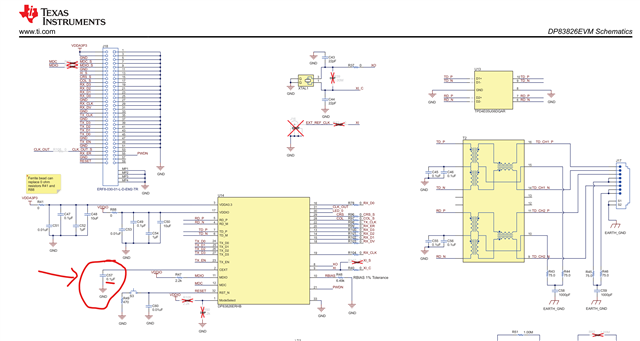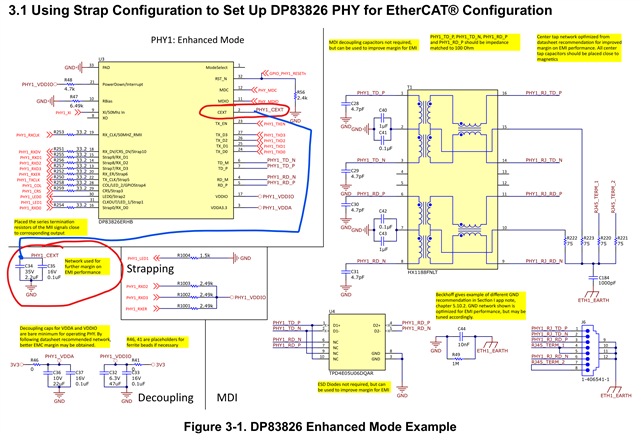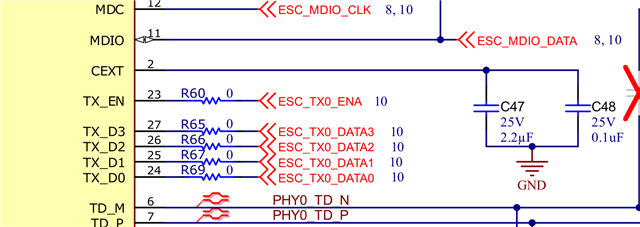Other Parts Discussed in Thread: DP83826E, DP83826EVM, HSEC180ADAPEVM
Tool/software:
Hello,
I am looking for guidance on CEXT capacitor on the DP83826I and DP83826E.
This old thread came as an authoritative answers:
https://e2e.ti.com/support/interface-group/interface/f/interface-forum/935079/dp83826i-dp83826-cap-on-cext-pin
However, here are the contradictions:
1- Datasheet States: External capacitor: Connect the CEXT pin through a 2-nF capacitor to GND.
Note this is the only mention of CEXT in the whole datasheet.

2- DP83826EVM uses a 0.1uF capacitor instead of 2nF.
From SNLU262A – DECEMBER 2019 – REVISED JUNE 2023. Figure 6-2 and Table 7-1.
www.ti.com/.../SNLU262

3- EtherCAT app note uses 2.2uF+0.1uF instead of 2nF.
Application Note: How and Why to Use the DP83826 for EtherCAT Applications
SNLA344C – MARCH 2022 – REVISED OCTOBER 2023
https://www.ti.com/lit/pdf/SNLA344
Figure 3-1
Note this is the only time an explanation is given: Network used for further margin on EMI performance
4- HSEC180ADAPEVM uses 2.2uF+0.1uF
This board docks the C2000 we are evaluation, and includes 2x DP83826E for EtherCAT communication.
From HSEC180ADAPEVM Design Files Package
https://www.ti.com/lit/zip/spac002
MCU134A_SCH.pdf
Sheet 7 of 13 and 8 of 13.
=====
The questions are:
1- Is the 2nF recommendation still valid?
5 year old referrenced questions stated putting 1uF on the EVM was an error and will be corrected. I now see TI doubled-down on extra capacitance.
A range instead of a value would help a lot.
2- What is CEXT for, exactly?
Knowing the function would help designers make adequate adaptations
3- Is there real EMC concerns for this pin?
As suggested by the EtherCAT app note. Knowing the expected frequencies would be required to properly build a capacitive network.
If designers are using their own judgement to deviate from datasheet, without adverse effects, then it should not be such a big deal. However, seeing ALL the TI physical realisations so far away from the recommendation puzzles me, a lot.
JosefMieslinger & Hermann Weigl: Did your design work out good with 2nF? Any notable troubles in EMC?
Justin Lazaruk: Did the situation change since your last answer?
Thanks!


